If you are starting to think about what to plant in your garden next spring and are looking for plants that attract butterflies, whorled milkweed (
Asclepias verticillata) is an excellent candidate for those of you who garden in sandy, well-drained soil. Like many other species of milkweed, whorled milkweed is a larval host plant for the monarch butterfly. This native perennial also attracts a number of different insect pollinators as well as herbivorous insects that specialize on feeding on parts of the milkweed plant. For migratory insects such as the monarch butterfly, this is one plant that can help provide food for both the adults and caterpillars.
Not in the central or eastern U.S.? Browse plants native to other regions of the U.S.
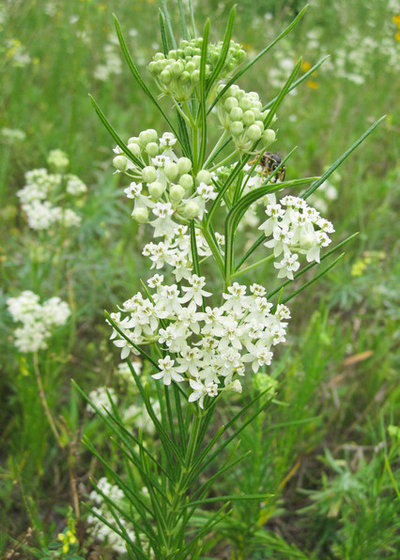
Holm Design & Consulting LLC
Botanical name: Asclepias verticillataCommon name: Whorled milkweed
Origin: Native to central and eastern North America from Montana southward to New Mexico in the west (absent from Colorado), and eastward to Florida in the south and Massachusetts in the north
Where it will grow: Hardy to minus 30 degrees Fahrenheit, or minus 34 degrees Celsius (USDA zones 4a to 10b; find your zone)
Typical plant communities: Dry prairies, roadsides, railway right-of-ways, old fields and woodland edges
Soil requirement: Dry to dry-mesic, sandy to loamy-sandy soil
Light requirement: Full sun
Mature size: 1 foot to 2 feet tall and 1 foot wide
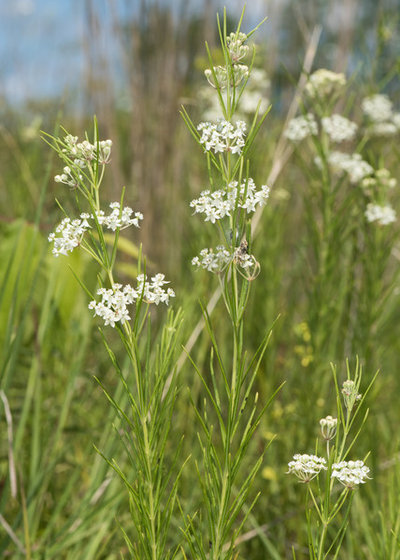
Holm Design & Consulting LLC
Benefits and tolerances: Tolerates dry conditions and well-drained soil
Seasonal interest: Bright white flowers open in early July through August; fine, linear foliage
When to plant: Spring or fall; potted plants and seeds are available from most native-plant nurseries in areas where it occurs
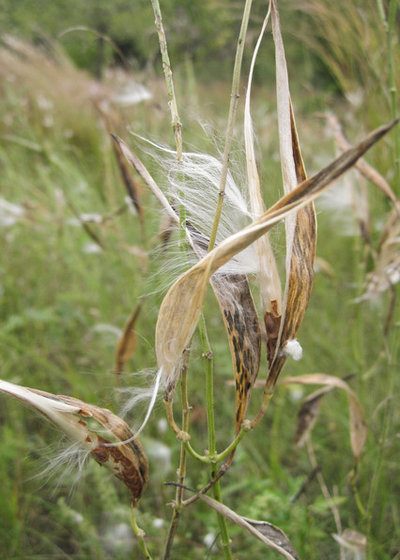
Holm Design & Consulting LLC
Distinguishing traits. Whorled milkweed has finely textured foliage and an upright form with bright white flowers that bloom from July into early September. Seedpods develop in early September and persist into late fall after they have opened and released their seeds.
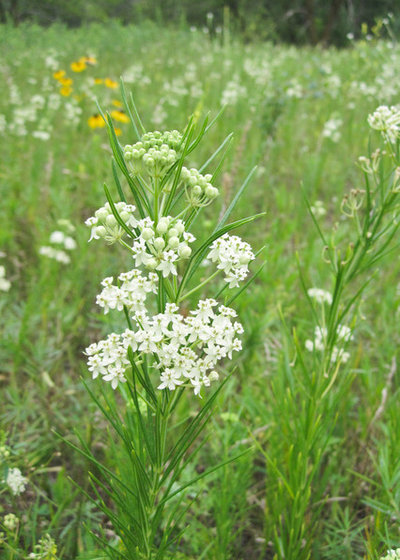
Holm Design & Consulting LLC
How to use it. Whorled milkweed can get overpowered by taller plants. Therefore, use this native plant along the border of a perennial planting, on the edge of a sidewalk or walkway, or on a dry boulevard in full sun.
Combine whorled milkweed with other drought-tolerant, native perennials, including anise hyssop (
Agastache foeniculum) and stiff goldenrod (
Oligoneuron rigidum), and prairie grasses, such as little bluestem (
Schizachyrium scoparium).

Holm Design & Consulting LLC
Planting notes. This is a rhizomatous plant and spreads by forming small colonies. It is not as aggressive as common milkweed (
Asclepias syriaca), however, so it will work in small- or medium-size perennial gardens where there is adequate drainage. This milkweed will not perform well in heavy soils such as a clay or silt-loam.
Collect seeds from the pods in late September just after the pods begin to open. The seeds can be stored in a cool, dry place for the winter. Thirty days prior to sowing in pots or outdoors in spring, mix the seeds with dampened sand and place in a container in the fridge.
Learn more about collecting seeds from your garden to sow now or save for later
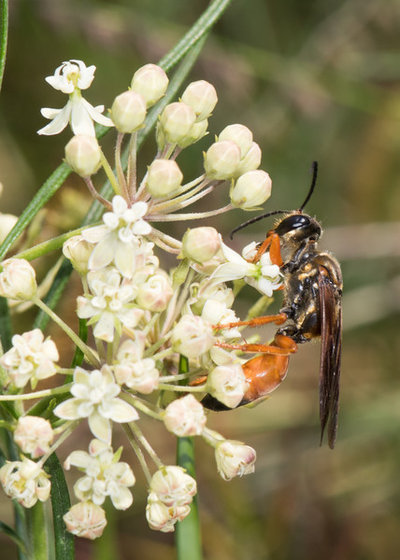
Holm Design & Consulting LLC
Pollinator notes. Milkweeds attract a large number of insects, including beetles, true bugs, and moth and butterfly caterpillars that specialize on feeding on some part of the plant, whether it’s the foliage or the seeds. These insects have the ability to metabolize and sequester toxic compounds in milkweed plants. These compounds help protect these herbivores from predation.
Pollinating insects that visit the flowers for nectar include solitary and social wasps, bees, beetles, butterflies and moths.
Shown: A great golden digger wasp visiting the flowers for nectar
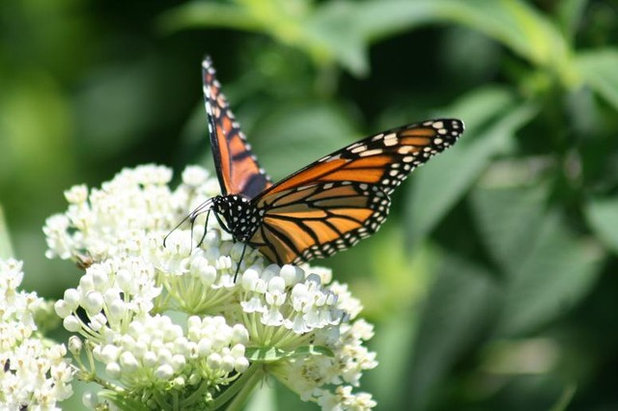
Benjamin Vogt / Monarch Gardens
This is a larval host plant for monarch butterflies, and a large colony of this plant can provide an adequate supply of larval food for their caterpillars. Adult monarch butterflies regularly visit the flowers for nectar.
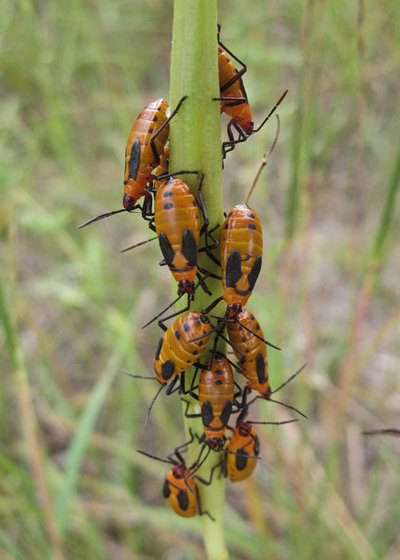
Holm Design & Consulting LLC
Shown: Large milkweed bug (
Oncopeltus fasciatus) nymphs clustered on the developing seedpods. These bugs feed on the plant’s sap as well as the seeds, but aren’t considered beneficial.





